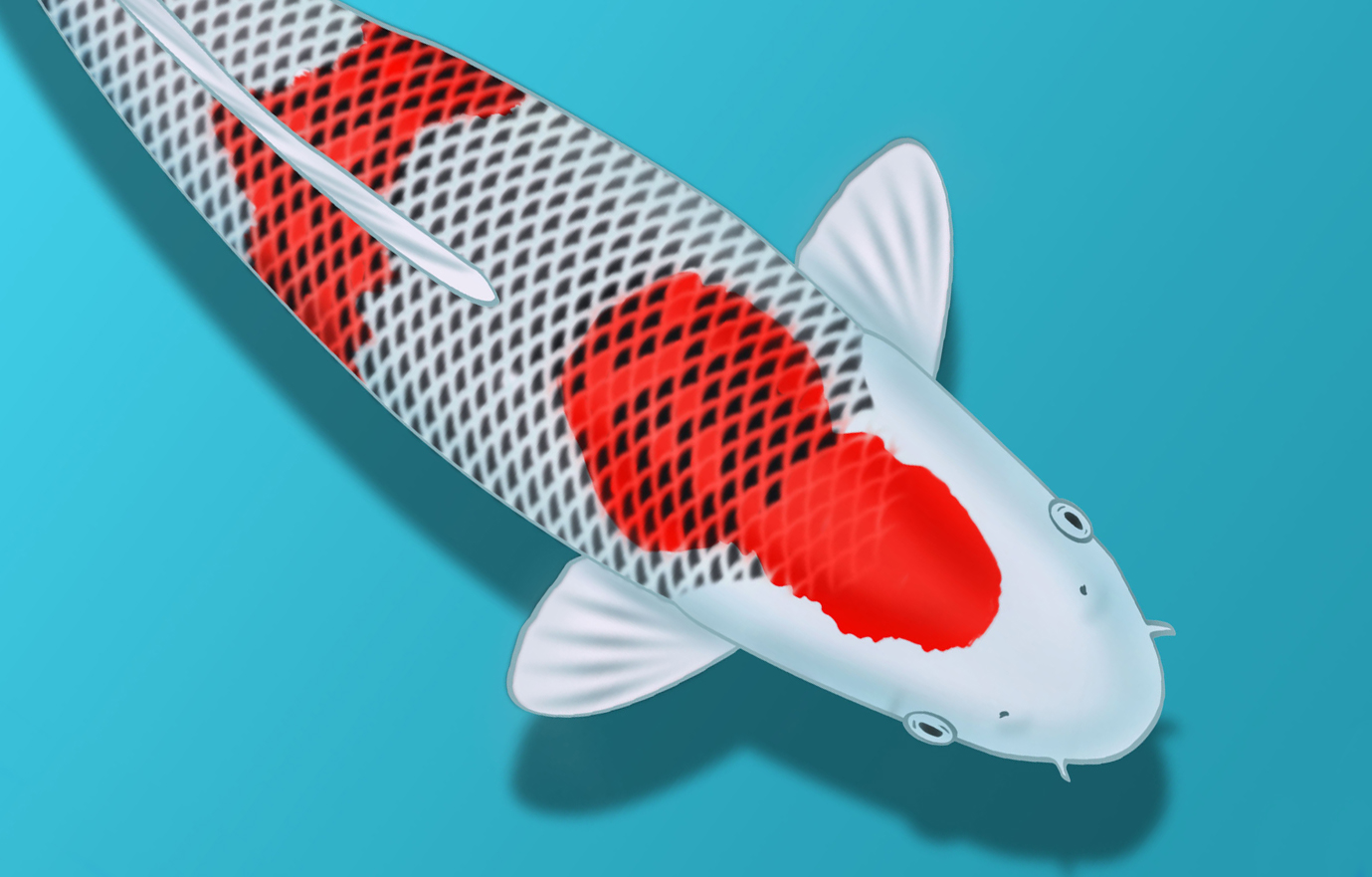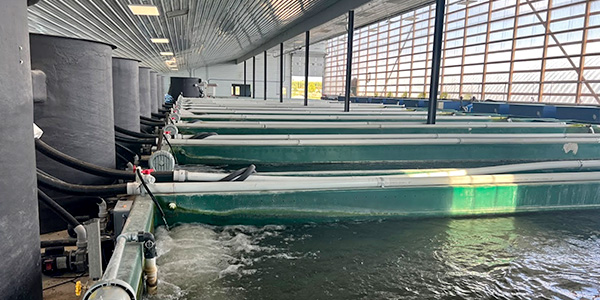What to Look for When Buying Goshiki Koi?
Posted by Kloubec Koi Farm on 18th Sep 2024

When shopping for Goshiki koi, prioritize a vibrant mosaic of five colors, with true red Hi color and well-defined clear Ai. A well-proportioned body, streamlined shape, and smooth scales indicate good health and robust constitution. Look for symmetrical, well-formed fins and a glossy coat. Inspect for blemishes or discoloration, which can signal health issues. The koi should swim effortlessly and navigate its surroundings with energy. Younger specimens with robust conformation have better growth potential, especially with high-quality care. By recognizing these key characteristics, you'll reveal the secrets to selecting an exceptional Goshiki koi that thrives in your care.
Key Takeaways
● Assess color quality and pattern, looking for vibrant Hi color, Asagi-like coloration, and balanced distribution of five colors.
● Evaluate body conformation and health, checking for well-proportioned body, streamlined shape, and smooth, glossy scales.
● Inspect skin and scales for healthy glossiness, firm texture, and vibrant color hues, with minimal blemishes or discoloration.
● Examine fins and movement quality, seeking symmetrical, well-formed fins and smooth, effortless swimming.
● Consider future growth potential, choosing younger specimens with robust conformation, and ensuring high-quality water and nutrition.
Assessing Color Quality and Pattern
A Goshiki koi's color palette is a mosaic of five colors, carefully balanced to create a visually stunning pattern. When evaluating color quality, a color vibrancy evaluation is essential to determine the overall aesthetic appeal.
Look for a vibrant and clear Hi color that should be a true red, as this is the centerpiece of the Goshiki's beauty. The Asagi-like coloration on each scale should exhibit a well-defined clear Ai color, which enhances the overall beauty of the koi. Reputable breeders, such as those from renowned Japanese farms like Shintaro, have spent years perfecting the art of breeding Goshiki koi with exceptional color quality.
A clean pattern of blue and grey netting is preferred, with minimal large black spots, ensuring a balanced and visually appealing design. Pattern symmetry examination is significant; an ideal Goshiki should have a harmonious distribution of its five colors across the body.
When considering a Goshiki's potential, take into account its color retention potential. Younger Goshiki koi with lighter coloration may have better potential for vibrant color development as they mature.
Evaluating Body Conformation and Health
When examining a Goshiki koi for potential purchase, evaluating its body conformation and overall health is fundamental to guarantee a strong and thriving specimen. A well-proportioned body is a key indicator of a healthy koi, as it suggests a robust constitution and potential for growth.
Look for a streamlined shape with a slightly tapered tail and well-defined fins, which contribute to its swimming ability and vitality. Reputable koi farms, such as those found in rural Amana, Iowa Kloubec Koi Farms, prioritize body conformation and health when breeding and raising their koi.
Body symmetry is essential, as irregularities can impact growth and movement. A balanced body width, with an emphasis on proportion, is also critical.
When evaluating koi health, there are several indicators to take into account. Smooth, glossy scales are a sign of good health and proper care, while blemishes or discoloration can signal underlying issues or previous damage to scales, skin, or both.
Observe the koi's behavior in water – active and agile individuals are typically in better condition than lethargic ones. Evaluating swimming ability is also important, as it can reveal potential health problems. A healthy Goshiki should move with ease and agility, demonstrating its energy and strength.
Inspecting Skin and Scales
While a Goshiki koi's body conformation and overall health are essential indicators of its well-being, the condition of its skin and scales provides equally important insights into its health and quality.
Inspecting the skin and scales of a Goshiki koi can reveal subtle clues about its care and living conditions. Look for scales that shine with a healthy glossiness, reflecting light well. This is a telltale sign of a well-cared-for koi, similar to those found at renowned Japanese farms such as Shintaro. Conversely, dull or lackluster scales may indicate poor water quality or inadequate nutrition.
Next, examine the skin for any blemishes, discoloration, or signs of damage. These can be red flags for underlying health issues or environmental stressors. The skin's texture is also important – it should feel firm and resilient to the touch. Any softness or fragility may suggest health problems or water quality issues.
When inspecting the scales, pay attention to the clarity of the color, particularly the Ai (blue) and Hi (red) hues, which should be vibrant and distinct against the white body.
Fins and Movement Quality
Elegance and poise in the water are hallmarks of a high-quality Goshiki koi, and a key factor in determining this is the condition and functionality of its fins.
Fin structure and movement fluidity reveal a lot about a Goshiki's health, growth potential, and overall quality. Observe how the koi swims, noting any irregularities or sluggishness, which could indicate underlying health issues.
Here are some key aspects to focus on when evaluating the fins and movement of a Goshiki koi:
● Symmetry and shape: Look for well-formed, symmetrical fins that indicate good health and proper growth potential.
● Movement and fluidity: The koi should swim smoothly and effortlessly, with no signs of labored or erratic movement.
● Color and condition: Fin coloration should match the overall color scheme of the koi, and be free of any discoloration, tears, or frays.
● Navigation and energy: A healthy Goshiki koi should be able to navigate its surroundings with ease, demonstrating liveliness and strong overall condition.
Selecting for Future Growth Potential
Selecting a Goshiki koi with strong future growth potential requires careful consideration of several key factors. While even the most skilled breeders can't predict with certainty how a koi will develop, prioritizing younger specimens with robust body conformation and vibrant colors can increase the likelihood of ideal growth and long-term aesthetic appeal.
Advanced breeding techniques have made it possible to cultivate Goshiki koi that can thrive in a well-designed growth environment, complete with high-quality water, adequate space, and effective filtration systems.
To maximize the growth potential of your Goshiki koi, it's important to implement nutrition strategies that provide the necessary building blocks for ideal development. A balanced diet rich in essential nutrients can help promote healthy growth rates, vibrant colors, and a robust immune system.
Look for koi with glossy, smooth scales and well-formed fins, as these characteristics often indicate overall vitality and future development potential. With proper care and attention, a high-quality Goshiki koi can grow to exceed 24 inches in length, making it a stunning addition to any koi collection.
Conclusion
The discerning eye of a seasoned koi-keeper is put to the test when selecting a Goshiki koi to buy. Will the chosen specimen thrive and reach its full potential, or will it falter, its beauty and liveliness slowly waning? The stakes are high, and the decision is far from trivial. With so much riding on the choice, the importance of careful evaluation cannot be overstated. The reward, however, is well worth the effort: a stunning, thriving Goshiki koi that inspires awe and wonder.
Bring your pond to life with vibrant, healthy koi.
Explore our full selection of koi for sale here:
www.kloubeckoi.com/koi-for-sale


